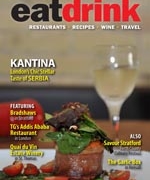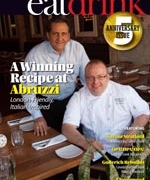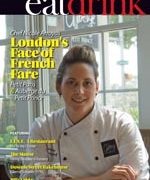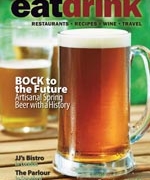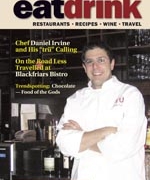Historic Mixology
If David Wondrich had not already won a James Beard Award for Wine & Spirits writing, his book could be nominated for a fake prize in the Longest Title category with its full title being Imbibe! From Absinthe Cocktail to Whiskey Smash, a Salute in Stories and Drinks to “Professor” Jerry Thomas, Pioneer of the American Bar, Featuring the Original Formulae for 100 Classic American Drinks and a Selection of New Drinks Contributed in his Honor by the Leading Mixologists of our Time. For our reading and drinking pleasure, Wondrich plays the role of cocktail history authority by paying tribute to the old school style of mixology by bringing to light the contributions of notable barman, Jerry Thomas (1830–1885). Between the American Revolution and Prohibition (1783–1920), mixing drinks became “the first legitimate American culinary art” and Thomas was in the thick of it. Near the middle of this timeframe, around 1856, the term “mixologist” started being used to describe bartenders who were experimenting with new concoction. Shortly after that in 1862, Thomas started to document these recipes and is credited for writing the world’s first bartending guide, How to Mix Drinks, or the Bon Vivant’s Companion. Aside from Thomas’ colourful biography and his contributions to the bartending world, Imbibe! offers an informative and in-depth reproduction of Thomas’ recipes from that original handbook peppered with Wondrich’s modern interpretations. The oldest drinks Wondrich refers to date back to the 1670s when bowls of punch were commonly made for large groups to gather around and drink away the afternoon. By Thomas’ time, those punch bowls graduated to single serving cocktails, paving the way for their more sophisticated brethren in the form of Whiskey Sours, Sherry Cobblers, and Gin Fizzes. Wondrich writes about standard drinks that sound contemporary – Tom Collins, Mint Julep, Dry Martini – but he presents them in a style that would have been familiar to Thomas, harkening back to when the art of cocktails involved mixes that were not pre-made and ingredients were fresh. Other drinks in the book sound foreign to a modern bar and may have fallen into obscurity, save for Wondrich’s attempt to make them popular again; drinks such as Philadelphia Fish-House Punch (its secret ingredient of peach brandy is a liqueur no longer available), Blue Blazer (a whisky based drink Thomas set on fire while mixing), and Stone Fence (bourbon mixed with apple cider).
It is Wondich’s commentaries interspersed throughout the recipes that make this book a readable and entertaining guide, more than just an instructional listing of over 100 recipes. For instance, a Hot Toddy seems to be a favourite of Wondrich’s as he writes: “A Hot Toddy – particularly one constructed upon a foundation of good Highland malt whiskey – is one of the clearest signs I know that there is a providential plan to the universe.” The temperatures of the drink suggests using a tempered mug to keep the drink hot, but he adds, “try not to use a ‘World’s Best Dad’ mug or other such cultural detritus; it cheapens the effect.” He goes on to give recipes for Apple Toddy (which included half of a baked apple), Hot Buttered Rum (a drink that started as a remedy for hoarseness), and Egg Nog (no cocktail is more involved than one that requires beating egg yolks).
Whether he is detailing the ingredients for an East India Cocktail or explaining the true origin of the Tom & Jerry (even though its name insinuates that Jerry Thomas invented it, Wondrich discovers it did precede Thomas), Wondrich wants us to know that “a proper drink at the right time – one mixed with care and skill and served in a true spirit of hospitality – is better than any other made thing at giving us the illusion, at least, that we’re getting what we want from life.” This is what any art does for humanity, including the culinary arts, which Wondrich presents in their full glory from bartending days gone by and that readers can bring back by experimenting with on their own.


